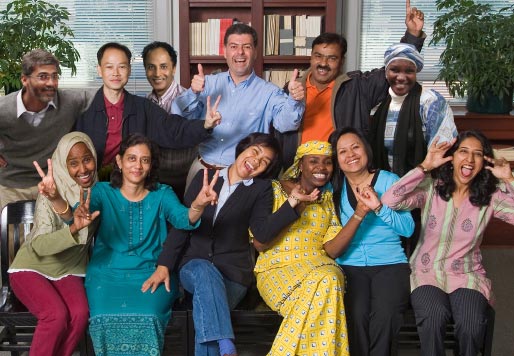The continued increasing allocation of financial resources to HIV and AIDS globally not only demands maximizing response to HIV/AIDS prevention, care and treatment but also redirecting the unprecedented resources towards Strengthening Health Systems....
The response to public health .... Mozambique, Ethiopia.... more to come .... and many to follow, the leadership model based on values by the people and for the people!
New York Times
June 18, 2007
Editorial
Two Cheers on Global AIDS
Now that the Group of 8 industrialized nations has pledged to commit $60 billion to combat AIDS and other diseases around the world in coming years — a substantial sum by any reckoning — Congress and other national legislatures ought to look hard for additional funds to close a looming gap between the funds committed and the needs of desperate patients.
The advanced nations — both the G-8 countries and other donor nations — have greatly increased their funding for AIDS programs in recent years in belated recognition that the epidemic threatens to destroy not just its victims, but also the social and economic fabric of many countries in sub-Saharan Africa. We are pleased that President Bush has proposed spending some $30 billion to combat AIDS abroad over a five-year period, from 2009 to 2013, but in truth that represents only a modest increase from the spending trajectory we were already on. At its recent summit meeting, the Group of 8 pledged to commit $60 billion to fight AIDS, tuberculosis and malaria “over the coming years,” including the American contribution.
Yet even these pledges will not be enough to keep up with the devastating epidemics. Tens of billions of dollars more will be needed to provide treatment, care and preventive services for AIDS alone over the next five years.
Although the Group of 8 pledges are welcome, they actually represent a retreat from previous goals. In 2005, at its meeting in Gleneagles, Scotland, the group pledged to provide “as close as possible to universal access to treatment” for all people suffering from AIDS by 2010. That should mean at least 10 million people in treatment by then, judging from estimates by United Nations AIDS experts. Yet at the recent meeting, the G-8 said it was aiming to treat only some five million patients in Africa by an unspecified date. That sounds like consigning millions of untreated people to death and disability.
To its credit, the United States has been by far the largest AIDS donor in recent years, providing almost half of the funding commitments made by donor governments. But when measured against the size of the national economy, the American donations rank only fifth. There is room to do more.
As Congress wrestles with the fiscal 2008 appropriations bills this year, it ought to provide the full $1.3 billion being sought by Congressional health advocates as the American contribution to a global fund to combat the three diseases — not just $300 million as proposed by the administration or the $850 million approved by the House Appropriations Committee. Congress should also set the nation — and by its example, the world — on course toward universal access to AIDS treatment by 2010.
Subscribe to:
Post Comments (Atom)




2 comments:
Good for people to know.
I like the way you illustrate your points in this article. Your article is pretty remarkable, and I enjoyed reading it
http://stdtests.us/chlamydia.html
Post a Comment